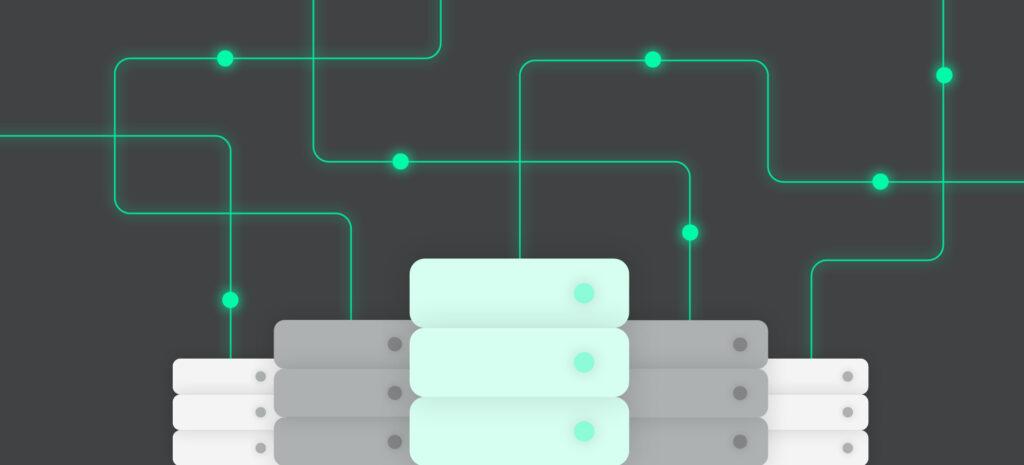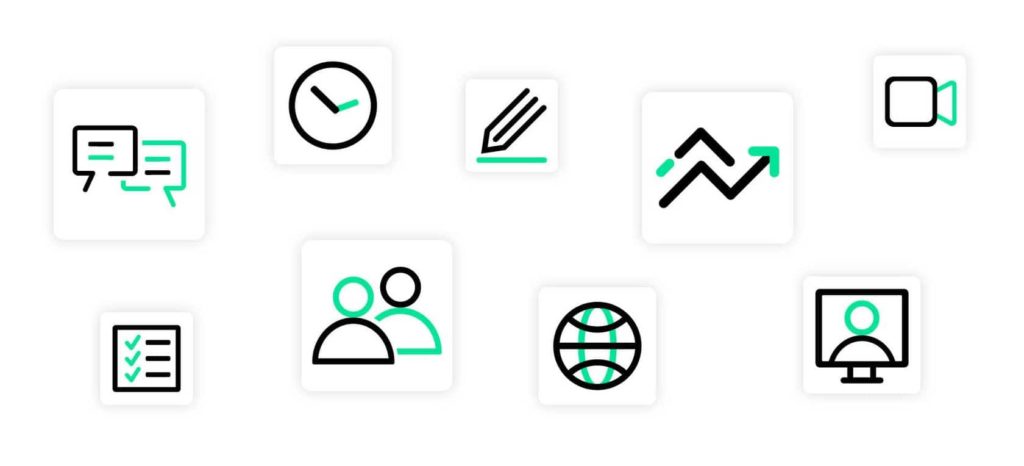In the pharmaceutical industry, real-world evidence (RWE) and real-world data (RWD) are often used to describe the data generated from observational studies of patients in actual clinical practice. The two terms are often used interchangeably but are distinct from one another. Let’s explore the difference between them and discuss how they’re used.
What is real-world data?
RWD is raw data collected from electronic health records, claims databases, patient-generated data, and other sources outside of randomized clinical trials (RCTs). This data can include, among other information, patient demographics, diagnoses, treatments, lab results, and patient outcomes. RWD typically needs to be transformed into a more helpful format before it can be used in decision-making. This is done through data transformation, which converts data from one format to another. Data transformation results in cleaned, validated, and ready-to-use information.
Real-world data vs real-world evidence
In contrast, real-world evidence in pharma is generated from RWD analysis. RWD includes the insights, conclusions, and inferences drawn from the data to understand how drugs and medical devices perform in the real world. In other words, RWE is the knowledge gained from analyzing and interpreting RWD.
RWE provides valuable information on drug effectiveness, safety, and use and can complement information obtained in RCTs. This is useful when RCTs have limitations like small sample sizes, limited diversity in patient populations, or controlled environments that don’t accurately represent real-world conditions.
But in addition to the benefits to clinical trial design and execution, using RWD and RWE can also impact the life science industry’s finances. In the next five years, top-tier big pharma companies could see a benefit of $300 million per year by implementing real-world evidence across their entire value chain. In a time of budget restrictions, restructuring, and downsizing, this prospect is attractive to companies with a robust drug development pipeline or blockbuster drugs poised to exit market exclusivity.
5 types of real-world data healthcare professionals should acquire
There are several types of RWD that healthcare professionals should acquire in pursuit of generating RWE, including:
- Electronic health records (EHRs). Digital records of a patient’s health history may include demographics, diagnoses, treatments, lab results, and other information and can provide a holistic view of patient health over time.
- Claims data. This administrative data generated by payers includes information on the use of and payment for healthcare services. Health insurance claims data provides information on the cost and effectiveness of various treatments and interventions.
- Patient-generated data. Patient-generated data is information collected from patients through surveys, diaries, or wearable devices and provides insight into patient experiences.
- Registry data. Includes information from product and disease registries, which collect data on a specific patient population over time. Registry data provides information on patient characteristics, treatments, and patient outcomes in real-world settings.
- Social media data. Patients and HCPs generate this information through social media platforms and can offer insight into patient behavior and opinions. It may be used to inform the development of new interventions and treatments.
Each type of RWD has strengths and limitations, and all five types are often combined with other big data sources to generate more comprehensive RWE. By acquiring and analyzing multiple types of RWD, healthcare professionals better understand how drugs and other treatments performed in the real world.
As more data becomes available, pharma companies may also consider using so-called non-health data. This can include:
- Spending data from credit card companies
- Location data
- Web-harvested data
While these types of data sound unrelated to health information, trial sponsors could use it to get a more complete picture of patient behaviors that might affect trial participation and continuation, likelihood of adhering to a medication regimen, and other factors that could impact the outcome of a trial or treatment.
Identifying real-world data and drawing insights
Life science organizations get insights from RWD by applying different methods of statistical analysis, including:
- Descriptive statistics provide a basic understanding of the distribution and patterns in the data gathered.
- Inferential statistics perform modeling and hypothesis testing to make inferences about a larger population based on a sample of the data.
- Machine learning uses algorithms to analyze large and complete data sets to identify patterns and relationships in the data.
- Real-world comparative effectiveness research compares the efficacy of different treatments in real-world settings.
Using these and other analytical methods, life science companies can obtain insights and conclusions from RWD and use them in shaping the development and eventual marketing of new drugs and medical devices.
How is RWD used in the pharmaceutical industry?
As mentioned above, RWD and RWE have applications in clinical trial design. It is typically used in different phases of a clinical study.
Pre- and post-authorization
In pre-authorization, RWD can be used to identify a patient population with an unmet need or to assess risk factors for a disease’s progression or poor outcome. Using this information, trial sponsors can home in on targets for drug development. Data from prescribing records might provide a complete overview of treatment strategies in use in real-world clinical practice. Real-world data might also determine a study protocol’s feasibility or patient eligibility criteria.
Post-authorization uses for RWD might include detecting or validating safety information over time, providing information about the risks of potential side effects not revealed in shorter-term trials or trials with fewer participants.
Regulatory guidance
The US FDA issued guidance on using RWD and RWE, stating that it acknowledges the increasing role of both “in health care decisions beyond post-approval safety and efficacy studies.” This updated guidance was prompted in part by the increased use of technology – including wearable monitors and sensors, mobile devices, and computers or tablets) that gather and store very large amounts of health data.
However, while RWD is common in the healthcare and pharma spaces, its ubiquity presents a challenge. This data is valuable but difficult to harness. To increase its usefulness, some groups are making a concerted effort to collect and collate RWD to make it easier to use. Currently, such RWD databases and resources include:
- Sentinel Initiative. The FDA created this system to connect healthcare data from various databases and monitor safety.
- Electronic Health Records for Clinical Research Project, or HER4CR, a platform that collates global hospital data to identify patients for clinical trials.
- PatientsLikeMe. This website allows members to communicate with other patients, discuss treatments and symptoms, and track personal health information.
- Accelerated Cure Project Repository. This large collection of biological samples and data from people with multiple sclerosis is designed to help researchers.
Trial sponsors can also analyze RWD for use in RWE trials, allowing researchers to study a drug’s effects over a long period. This information can be obtained from the five data types mentioned above and is essential to understanding how new treatments perform in real-life settings. Thanks to the availability and accuracy of RWD, RWE trials are becoming more popular: in 2019, the GlobalData Clinical Trials database recorded 160 RWE trials; in 2021, there were nearly 200. It seems likely that this trend will continue, as regulatory bodies like the US FDA and European Medicines Agency (EMA) actively promote the use of RWE trials.
The challenges of RWD and RWE
Despite the US FDA’s efforts to encourage and codify the use of RWD, the pharmaceutical industry still encounters challenges related to its effective use. It’s important to remember that RWD and real-world evidence are not infallible. They can be subject to a few drawbacks and require rigorous analysis and confirmation to ensure the reliability of any findings. Potential drawbacks include:
- Poor data quality. RWD is collected for many reasons outside of a medical or clinical research question. Thus, they may not hold up to rigorous analysis. Data could be incomplete or inaccurate.
- Bias. Selection bias, measurement bias, and confirmation bias can all compromise the quality of RWD.
- Over-generalization. If RWD is collected from specific populations for a specific purpose, it may not apply to other populations. In a drug development process, data collected from one region may not reflect patients’ experience or treatment use in other parts of the world.
- Interpretation. Complex data sets can present challenges – it is necessary to use rigorous analytical methods and consider sources of problems in the data, including bias or poor quality.
Many drug developers also have technology-related issues that prevent the effective use of RWD to generate RWE. Most of these relate to the vast amounts of accumulating data or a company’s inability to process and transform it into a usable format. Some of these issues are:
- Obtaining and integrating siloed data
- Transforming unstructured data
- Lack of IT infrastructure to support data processing
- Running afoul of data privacy laws
Just one of these roadblocks can prevent drug developers from using RWD effectively, but often, organizations face a combination of issues.
Insights management, RWD, and real-world evidence
Expanded use of RWD is one of the most compelling reasons to bring an insights management platform into your organization. The reason for this is the condition of the data, which is often unstructured and difficult to use. However, typical features of an insights management platform include an artificial intelligence component with capabilities like natural language processing and sentiment analysis. These tools can pick up trends within medical charts, doctors’ notes, and other data types that can be powerful in RWE use cases.
An insights management platform can be used with RWD and RWE to support decision-making and innovation in drug development, clinical trial design, and execution. Pharmaceutical companies can integrate RWD from EHR data, patient data, and other sources within an insights management platform to get a more comprehensive view of a patient population. This insight could provide more accurate insight into the disease state, treatment pathways, and other aspects that could optimize study protocol design and speed the development of new drugs.
Trial sponsors are also exploring increased use of RWD alongside data gleaned from RCTs. According to McKinsey, technology maturation enables this shift: “Real-world evidence (RWE) has been in use for decades, but recent advances in digital and advanced analytics allow it to be employed in new ways.” This may save time in the form of fewer control groups, patient recruitment and enrollment, and issues stemming from patient retention.
The increased use of RWE and insights management technology may help ease pharma’s productivity problem. Learn more in our blog post.






